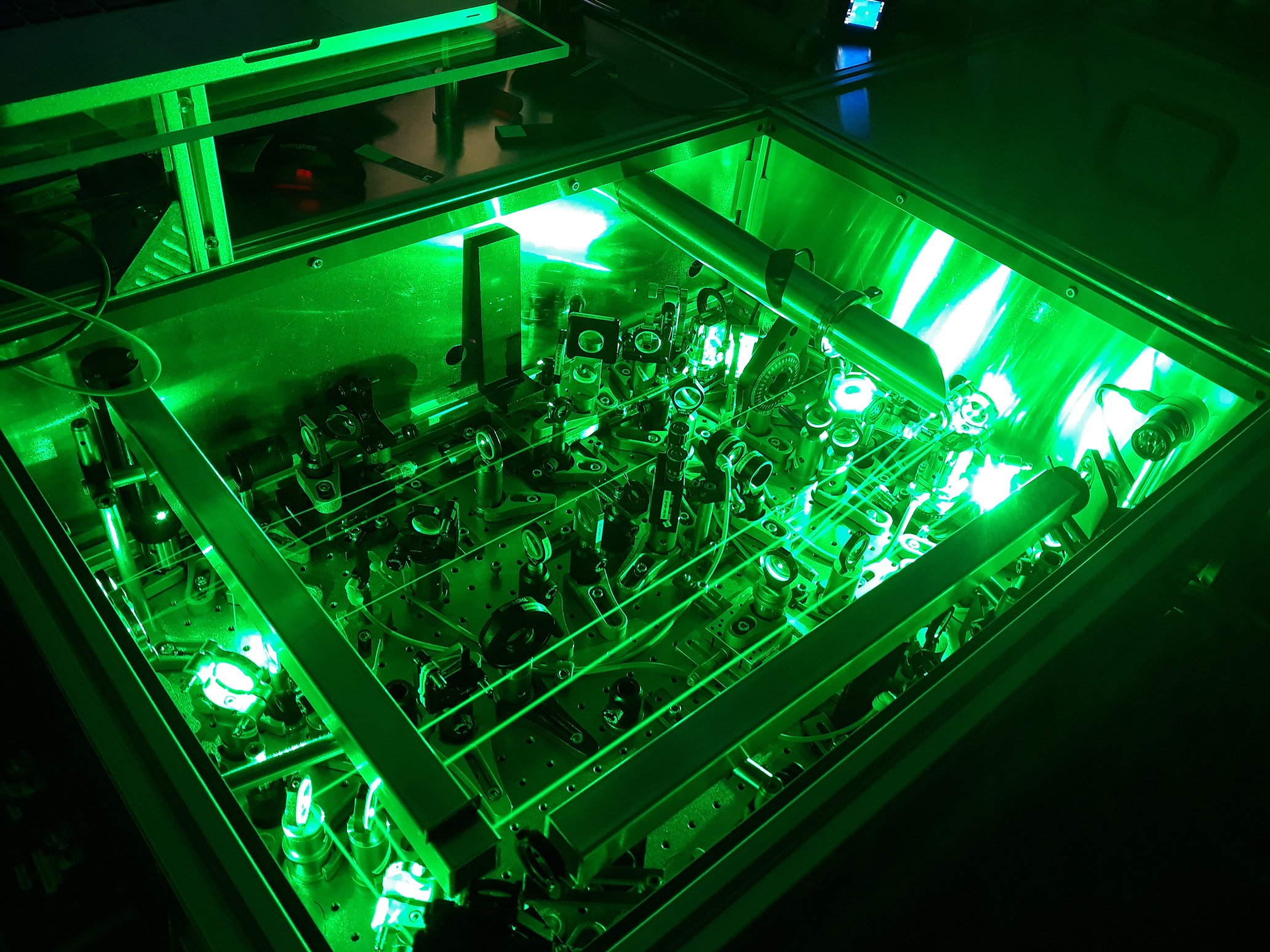Research
The research of the group focuses mainly on ultrafast light-matter interactions on shortest timescales and in solid-state systems.
Hot carrier transfer across material interfaces
The resonant interaction of light with metallic nanoparticles that are attached to a suitable acceptor can lead to the efficient transfer of energetic (“hot”) charge carriers to that acceptor. This acceptor can, for example, be a semiconductor or a molecule. Two main mechanisms are predicted to govern this hot carrier transfer: 1) indirect transfer, in which the energetic carriers are first produced in the metal and then move to the acceptor, or 2) direct transfer, where excitation and transfer occur in a single step. While the direct transfer mechanism has the potential to be more efficient than its indirect variant, it has so far eluded direct experimental confirmation. This has to do with the few-femtosecond (1 femtosecond = 10-15 s) time scale on which this mechanism is predicted to unfold and the difficulty of distinguishing it from the indirect channel with conventional experimental methods.
In this research line, we make use of the sub-femtosecond temporal resolution attainable with attosecond transient absorption spectroscopy (ATAS), its high sensitivity to changes of the electronic population and its element specificity. We believe that ATAS is the tool of choice to yield direct proof for the existence of the direct hot carrier transfer mechanism. The existence and detailed unerstanding of such a process is highly relevant for a wide array of current and future applications in the field of plasmonics and has implications for its use in photocatalysis, photovoltaics or photodetection.

Charge localization in transition metals and transition metal containing compounds
In this project, we apply attosecond transient absorption spectroscopy (ATAS) to transition metals and transition metal containing compounds – in particular, the 2D material classes of transition metal dichalcogenides (TMDCs) and MXenes. From our prior work on Ti and MoSe2 we know that the immediate response of the transition metals to optical excitations is driven by a change in electron localization around the transition metal atom. In MoSe2 we observed a contrasting behavior, dominated by band-filling, energy-shifts and broadening, when probed via a Se based core level instead of a Mo initial state.
The core of this research line is to study under what circumstances which response dominates and why different probe transitions in the same material yield apparently contrasting answers. Furthermore, in some materials a transition in dominant response may occur while it is absent in others. Some materials show a delayed onset of the charge localization response while in others charge localization manifests quasi-instantaneously, but decays much faster than the band-filling response. The systematics and mechanisms underlying these different behaviors are investigated in this project.
